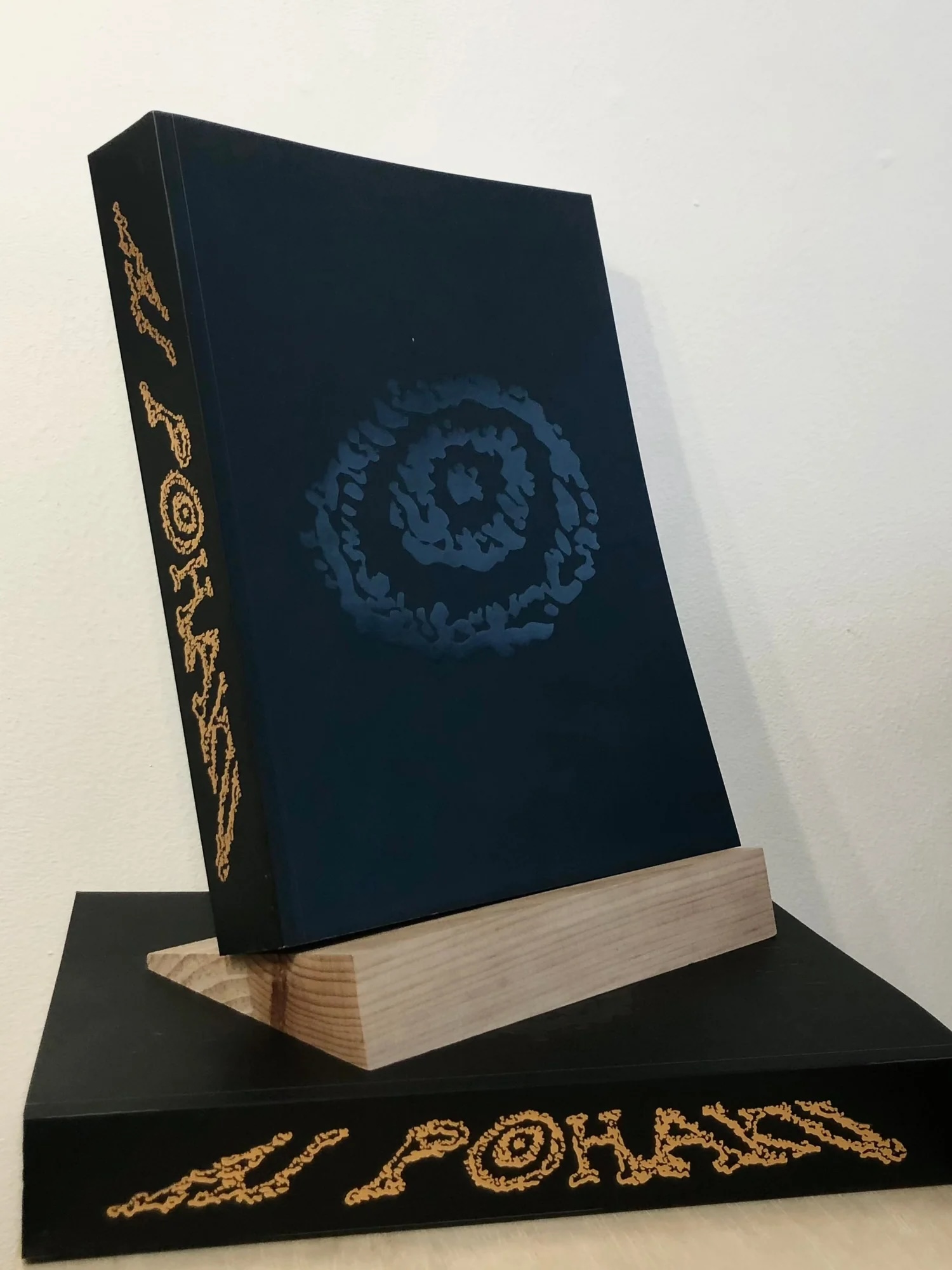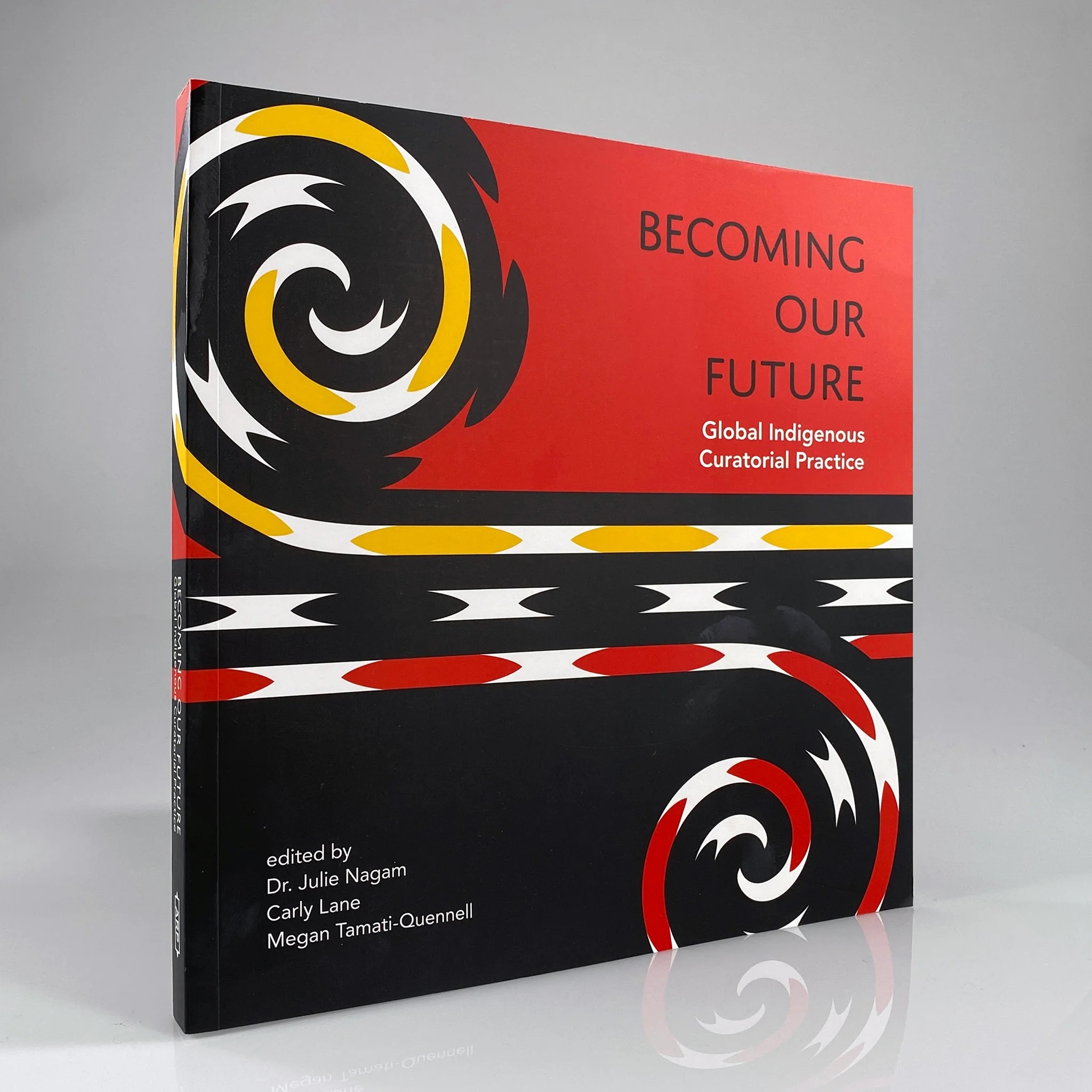ʻAi Pōhaku, Stone Eaters: Native Hawaiian Contemporary Art in Hawaiʻi 1976–2023
Drew Kahuʻāina Broderick, Josh Tengan, and Noelle M.K.Y. Kahanu, eds.
Soft-cover
808 pages
9x12”
Edition of 1500
2024-12
“The 808-page publication, ʻAi Pōhaku, Stone Eaters: Native Hawaiian Contemporary Art in Hawaiʻi, 1976–2023, is a landmark resource documenting the exhibition ʻAi Pōhaku, Stone Eaters (2023) and its broader historical and cultural context. ”
Digital PDF
Physical
Digital PDF
Physical
Filed under:
BOOK, PUBLICATION
BOOK, PUBLICATION

“Kalo, like much of the work in Akamine’s oeuvre, connects communities across the paeʻāina, across time, and generations, in aloha ʻāīna and ongoing resistance to American annexation and occupation in our islands.” ->



Notes from Kahoʻolawe, Ka Paeʻāina o Hawaiʻi, Moananuiākea
for Artlink Australia Issue 40:2 INDIGENOUS_Kin Constellations Lanugages Waters Futures
2020-06
Co-authored with Drew Kahuʻāina Broderick, this essay connects communities land-struggle movement across Ka Paeʻāina o Hawaiʻi – Kahoʻolawe, Kanaloa, Mauna Kea, Mākua – to spaces across Moanauiākea – Ihumātao, Tāmaki Makaurau, and Kaurna Lands.

Becoming Our Future: Global Indigenous Curatorial Practice
Julie Nagam, Carly Lane, Megan Tamati-Quennell, eds.
2020-06
Becoming Our Future: Global Indigenous Curatorial Practice explores how Indigenous visual art and culture operate within and from a structural framework that is unique within the cultural milieu. Through a selection of contributions by Indigenous curators, artists, and scholars brings together perspectives that define curatorial practices, and at the same time postulates Indigenous sovereignty and self-determination within the three countries. These compelling essays begin to unearth the connections and historical moments that draw Indigenous curatorial practices together and the differences that set them apart.
Filed under:
PUBLICATION
PUBLICATION

“In the late 1960s through the 1970s, the second Hawaiian Renaissance was growing, and kapa, considered a lost art form since the 1890s, was being rediscovered by artists like Malia Solomon, Puanani Van Dorpe, Marie McDonald, and Moana Eisele. It was during the Renaissance that Cheng began to develop her own visual language. She celebrates the pattern work of tapa through the use of her native batik process.” ->
